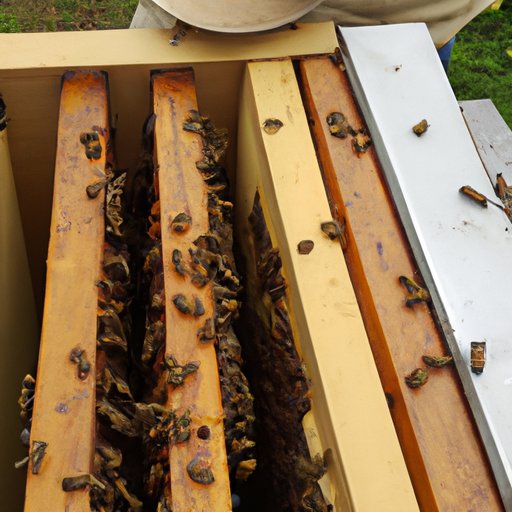Introduction
Starting a bee colony can be a rewarding and educational experience that helps to support the environment and promote sustainable agriculture. This article will provide an overview of the steps required to start a successful bee colony, including researching the basics, sourcing quality supplies, choosing the right location, assembling the hive, introducing a queen bee, monitoring the bees, and maintaining the colony.
Research the Basics
The first step to starting a bee colony is to research the needs and requirements of beekeeping. It’s important to understand the different types of bees and hives, as well as the different tools and equipment that are needed for successful beekeeping. There are a variety of resources available online and in books that can provide valuable information about beekeeping.
Source Quality Supplies
Once you have researched the basics, it’s time to purchase the necessary equipment to start a bee colony. When selecting supplies, it is important to consider both the cost and the quality of the items. You should also be sure to purchase the appropriate number and size of hives, as well as any other essential supplies such as protective clothing, hive tools, and feeders.
Choose the Right Location
The next step is to find an ideal spot for your bee colony. An important factor to consider is the local laws and regulations regarding beekeeping. You should also look for a spot with plenty of flowers and plants nearby to provide food for the bees. Additionally, you should make sure the area is away from any potential hazards or risks to the bees.
Assemble the Hive
Now that you have the supplies and the location, it’s time to assemble the hive. Be sure to follow the instructions carefully and use the appropriate tools and safety precautions. It is also important to ensure that the hive has been properly sealed to prevent possible pests or disease.
Introduce a Queen Bee
Once the hive is assembled, it’s time to introduce a healthy queen bee to the hive. The queen bee is responsible for laying eggs and producing new bees, so it is important to monitor the progress and ensure the queen’s health. If there is no queen bee present, the hive will eventually die out.
Monitor the Bees
Regularly checking on the progress and health of the colony is essential to successful beekeeping. It is important to identify any signs of potential issues such as pests, disease, or lack of food. Taking regular notes and photos can help track the progress of the colony over time.
Maintain the Colony
The last step is to provide proper maintenance and care to ensure the longevity of the colony. This includes making sure the bees have enough food, water, and shelter. It is also important to regularly inspect the hive and check for any signs of damage or deterioration.
Conclusion
Starting a bee colony can be a rewarding and educational experience. It is important to research the basics, source quality supplies, choose the right location, assemble the hive, introduce a queen bee, monitor the bees, and maintain the colony. With patience and dedication, you can successfully create and sustain a thriving bee colony.
(Note: Is this article not meeting your expectations? Do you have knowledge or insights to share? Unlock new opportunities and expand your reach by joining our authors team. Click Registration to join us and share your expertise with our readers.)
